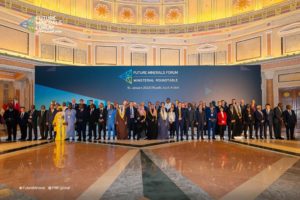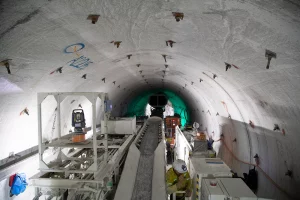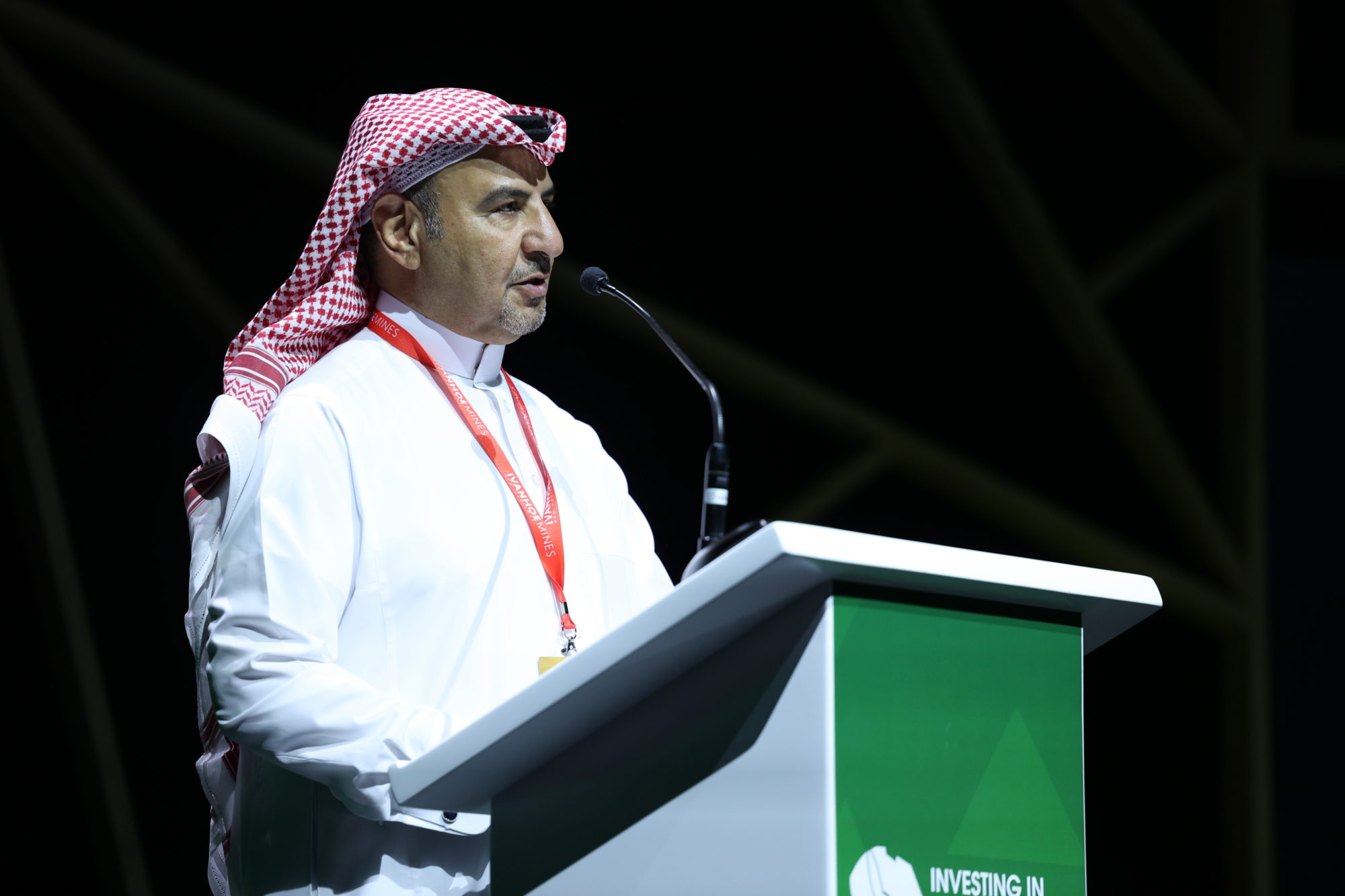Saudi Arabia is using its investment power to create a more diverse and sustainable economy through its Vision 2030 initiative. This includes transforming Saudi Arabia into a leading industrial powerhouse and a global logistics hub, by maximising the value of its mining and energy sectors while unlocking the full potential of local content and the 4th Industrial Revolution (4IR).
But it is not doing this alone – it is working with other governments and the wider mining sector to help it get there. One of these country partners is South Africa. Saudi Arabia and South Africa share some characteristics – first of all they are both large and well-developed nations; South Africa’s area is 1.22 million km², and Saudi Arabia’s is nearly double this at 2.15 million km². Plus they both play an important economic role in their respective regions and as such have a lot of influence on surrounding nations. Both also face challenges with commodities like water.
Saudi Arabia Ministry of Industry and Mineral Resources Vice-Minister for Mining Affairs, Khalid Al-Mudaifer, speaking at Mining Indaba

However, there are also significant differences – South Africa’s population is now over 60 million compared to Saudi’s 36.4 million. And in mining there are also major differences – South Africa has one of the largest scale and longest running mechanised mining industries in the world, and remains a leading diamond and gold producer as well as still holding the top spot for chrome, manganese, platinum and vanadium. Yes, it has its social and political challenges, but mining is still its largest industry by some margin. It is also relatively well-explored in terms of minerals. In technology and services terms and finance/investment, South Africa has huge influence on the mining sectors of surrounding countries like Botswana, the DRC, Zambia and Zimbabwe.
Saudi Arabia’s economy remains oil dominated, and its modern mining industry is still relatively youthful – though great strides have been made by the state-owned miner Ma’aden in phosphates, gold and bauxite for example, as well as by other groups like AMAK. But in mineral exploration terms, vast tracts of Saudi Arabia remain relatively unexplored by comparison with South Africa.
Of course, this is all being addressed by a huge push by the country to grow fast in mining, exemplified by the very successful Future Minerals Forum, held for a second time in January this year, along with a Ministerial Roundtable. And this has led to new commitments, JVs and investments by some of the world’s top miners like Barrick, Ivanhoe Mines, ERG and others.
Some 62 countries were represented at the Future Minerals Forum Ministerial Roundtable in January 2023

In his speech at Mining Indaba, Saudi Arabia Ministry of Industry and Mineral Resources Vice-Minister for Mining Affairs, Khalid Al-Mudaifer pointed out that 62 country delegations participated in the Roundtable and 22,000 delegates attended the Forum, in-person and virtually. Among them, Africa was well represented.
Sustainable mining growth
Saudi Arabia wants to achieve its rapid mining growth in a sustainable way. Al-Mudaifer also told Mining Indaba: “Environment, Social and Governance, or ESG, will be more mature in 2023: We will see more meaningful actions and more transparent reporting. This is relevant because investors will choose to work with jurisdictions that are doing the right things for people and the environment. This means that, in our sector, decarbonisation efforts will increase rapidly. Our focus must be on helping to achieve net zero ourselves, while also enabling a just and equitable transition for the entire economy.”
He added that mining and net zero go hand in hand: “Without more minerals, sustainably sourced, there won’t be an energy transition. It’s a simple as that. It’s clear that if we don’t work together, we will not be able to find, extract and process the minerals, and manufacture the finished goods needed, to achieve net zero.”
Saudi Arabia’s own Green Initiative looks to integrate environmental protection, energy transition and innovative sustainability programs to achieve a green future. This is happening hand in hand with mining growth.
Big benefits on both sides
In mining terms, Saudi Arabia can learn a lot from South Africa, both in terms of being a regional hub for mining, plus a hub for mining investment, as well as having a well-developed downstream industry with output of value-added final products and metals from mined ores. Therefore, it was very fitting that a large delegation from Saudi Arabia attended the Mining Indaba event in Cape Town this year. It included a team from the Saudi Ministry of Industry and Mineral Resources plus numerous representatives from the Saudi Geological Survey, Ma’aden, and IT and technology focused conglomerate Al-Rushaid Group, amongst others.
But of course there are also upsides for South Africa in knowledge sharing. Al-Rushaid as an example signed partnership agreements at Mining Indaba with South Africa companies including MSA Group, a leading provider of exploration, geology, mineral resource and reserve estimation, mining and environmental consulting services. It also agreed to partner with Master Drilling Group, one of the world’s largest raise boring and drilling services providers in mining. Other agreements were put in place with WH Auctioneers, Africa’s fastest-growing industrial asset and property auctioneers, and Geopractica, a specialist in providing geotechnical solutions.
Saudi conglomerate Al-Rushaid recently signed a partnership agreement with Master Drilling in South Africa, whose expertise includes mobile tunnel boring for mine development

Saudi Arabia’s leading mining company, Ma’aden, was also looking for new partnerships and cooperation. In his keynote, CEO Bob Wilt stated: “We will be looking for partners to help us deliver on our exploration, technology and innovation and sustainability goals. We look forward to working more closely with the wider mining ecosystem and forming mutually beneficial strategic partnerships.”
And Saudi Arabia’s mining investment will not be limited to the MENA region. Al-Mudaifer reminded the Mining Indaba attendees that during the Future Minerals Forum, a new joint venture was announced between the Saudi Public Investment Fund and Ma’aden. Initially funded with $3.2 billion, this new company will invest in mining assets internationally, with a focus on metals and minerals that are critical to the energy transition, including iron ore, copper, nickel and lithium. This will include investment in Africa. Saudi companies are already very active in Africa, including South Africa, such as oil and gas giant Aramco, but also many service companies.
In a discussion with IM during the Cape Town show, Al-Mudaifer said: “South Africa has vast experience in mining, and that is one of the reasons we came to Mining Indaba – for us to learn from its experience and meet with some of its world class services providers as well as its centres of excellence such as the Geological Society of South Africa. In Saudi Arabia, we already have world-class infrastructure and high domestic and regional demand, a labour force experienced in heavy industry through our oil and gas sector, good relationships with large engineering houses plus free ports and a favourable tax environment. We believe we have the planning and the vision, with support from the top of government, to become a hub for our region.”
He added that the relationship between the two countries is already very good – “The South African President Cyril Ramaphosa made a state visit to Saudi Arabia last October, and South Africa’s Minister of Mineral Resources and Energy Gwede Mantashe attended and spoke at the Future Minerals Forum 2023. We already have $15 billion of bilateral agreements in place between our two countries including cooperation between our respective mining Ministries to cooperate on development.” And this is not just on high-level trade – the two countries are sharing ideas on how to attract young talent into the mining industry.
He also said in addition to meeting with various officials at South Africa’s Department of Minerals Resources at Mining Indaba, the Saudi delegation also had the chance to sit down again with some of the major global miners at the event, including those it is already working closely with, like Barrick, but also others like Anglo American and Rio Tinto.
And aside from the service providers mentioned with relation to signed agreements, he also said a priority was accessing South African expertise in areas like mineral processing and metallurgy, especially in relation to production processes for so-called green metals like lithium, nickel, copper and cobalt. He additionally referenced South Africa’s unique capabilities in deep mining; and the progress it has made in mining safety, such as the leading role it has taken in proximity detection and collision avoidance technology applications.
Finally, he highlighted the leading role South Africa is taking in setting up a green hydrogen economy – its Green Hydrogen National Programme, which has been designated as a Strategic Integrated Project (SIP) for accelerated development under the country’s Infrastructure Development Act. Saudi Arabia has its own big green hydrogen plans – the NEOM Green Hydrogen Project is the world’s largest utility scale, commercially-based hydrogen facility powered entirely by renewable energy.
Creating opportunities
Al-Mudaifer closed his Mining Indaba speech with this statement: “I wish to reiterate our excitement in the Kingdom of Saudi Arabia about partnering with current and prospective mining jurisdictions here in Africa. We learned a tremendous amount during our own mineral and metal transformation. We believe sharing that knowledge and creating opportunities to collaborate will make the world and this continent richer. We believe working together will create more equitable economic development. We believe, together, we will be better equipped to take our proper place on the global economic stage. Let’s work together to explore our vastly under-explored geology…to attract and enable the investment needed to expand our mining jurisdictions…to drive economic development…to shine a spotlight on the incredible mineral and metal potential of Africa and Asia…to make net zero a real possibility.”











